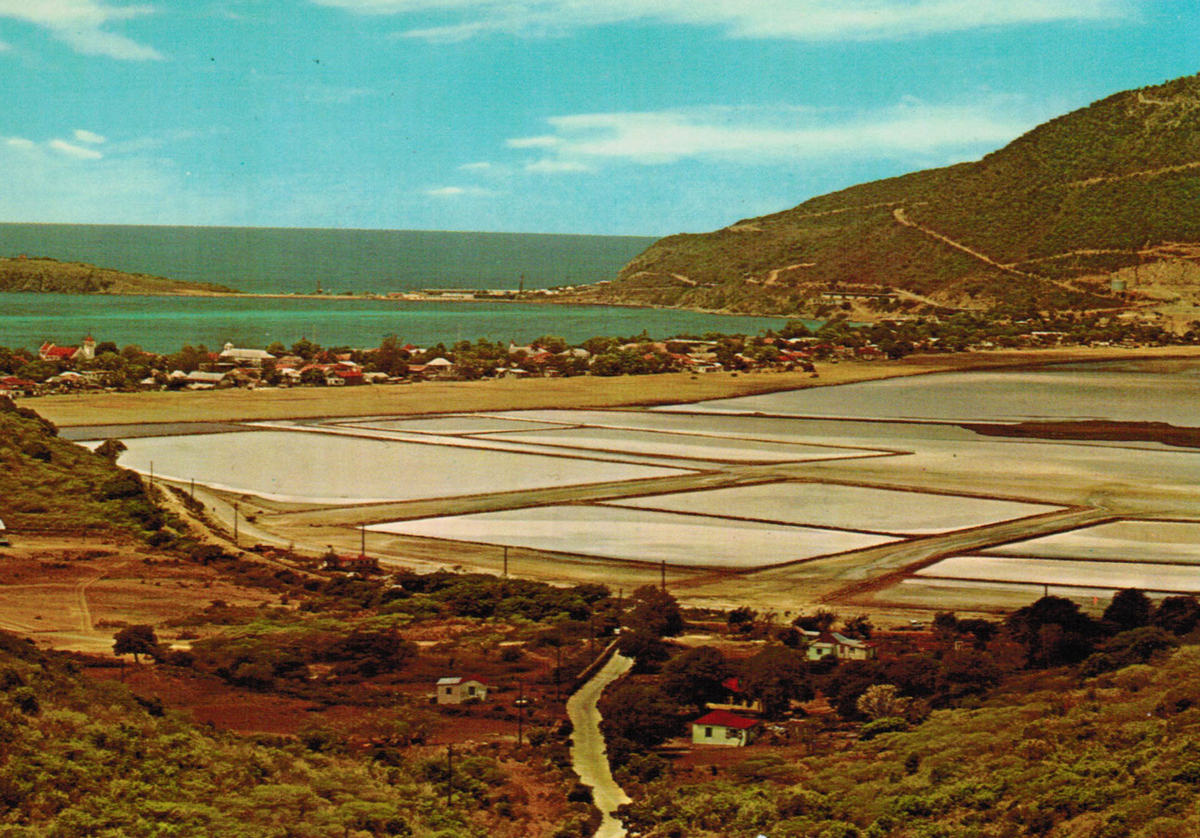
History of Saint Martin / Sint Maarten: A Journey Through Time
The island of Saint Martin / Sint Maarten, often referred to as the “Friendly Island,” boasts a history as rich and complex as its cultural tapestry. Situated at the crossroads of the Caribbean, this island has witnessed a dynamic history marked by the rise and fall of indigenous civilizations, European exploration, and colonization, alongside the resilience of its people facing natural disasters. This narrative explores the history of the island, shedding light on the events and peoples that have shaped the vibrant and diverse community that exists today.
Early Inhabitants: The Amerindians
Long before European ships sailed into the Caribbean, the island of Saint Martin was home to the Ciboney, a subgroup of the Arawaks, believed to have settled there approximately 3,500 years ago. This early period in the history of Saint Martin is crucial, as these early inhabitants laid the foundation for the island’s cultural evolution. These early settlers were followed by another wave of Arawaks around the year 800, who migrated from the Orinoco Basin in South America. They named the island “Soualiga,” meaning “Salt Land,” highlighting the significance of the island’s natural resources. The Arawaks, who were primarily farmers and fishermen, developed a society characterized by advanced agricultural techniques and resilience against seasonal hurricanes. Their artistic and spiritual practices were integral to their daily life, reflecting the depth of their cultural history.
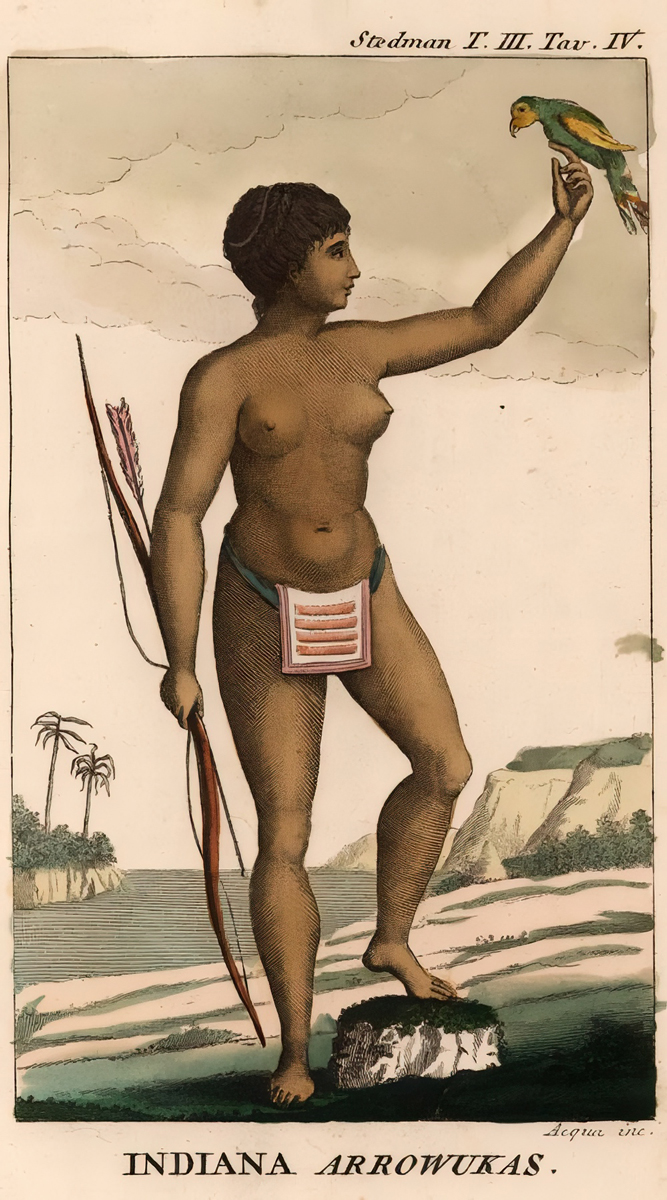
However, the peaceful Arawak society was disrupted by the arrival of the Caribs, a warrior nation also from the Orinoco Basin. The Caribs’ aggressive expansion led to the decline of the Arawak population, with many being killed or enslaved. By the time European explorers arrived in the Caribbean, the Caribs had largely supplanted the Arawaks, marking a significant shift in the island’s history and its cultural landscape.
European Discovery and Early Colonization
In 1493, during his second voyage to the New World, Christopher Columbus sighted the island on November 11, the feast day of Saint Martin of Tours. Columbus named the island “Isla de San Martín” in honor of the saint, marking a pivotal moment in the history of Saint Martin / Sint Maarten. Despite this christening, Spain showed little interest in colonizing the island, considering it less valuable compared to other Caribbean territories. This indifference left the island open to other European powers, particularly the French and the Dutch, who were eager to extend their influence in the region.
The French sought to establish a foothold in the Caribbean, targeting islands between Trinidad and Bermuda. The Dutch, meanwhile, viewed Saint Martin as strategically important due to its location between their colonies of New Amsterdam (present-day New York) and Brazil. The island’s salt deposits were highly prized, and in 1631, the Dutch established a colony on Saint Martin, constructing Fort Amsterdam to safeguard their interests. The first governor, Jan Claeszen Van Campen, led the colony as the Dutch East India Company began to exploit the island’s salt resources.
However, the Dutch were not the only Europeans interested in Saint Martin. French and British settlers also established small colonies on the island. Recognizing the growing competition and the strategic value of the island’s salt, the Spanish decided to assert control. In 1633, during the Eighty Years’ War between Spain and the Netherlands, Spanish forces captured Saint Martin, driving out the Dutch and other European settlers. The Spanish built the Old Spanish Fort at Point Blanche to solidify their hold on the island, marking a significant chapter in its history.
For the next fifteen years, the Spanish maintained control over Saint Martin. However, the end of the Eighty Years’ War in 1648 marked a shift in priorities. The island was no longer seen as a crucial asset, and Spain’s interest in defending it waned. Consequently, the Spanish abandoned the island, leaving it open for reoccupation by other European powers.
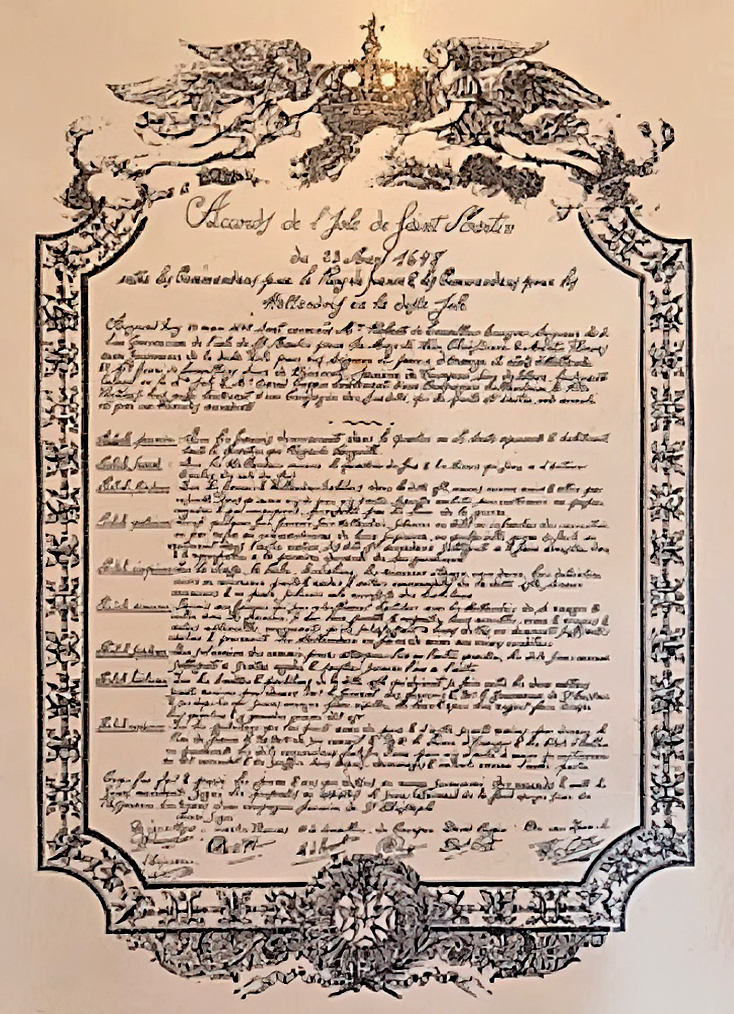
The Treaty of Concordia and the Division of the Island
With the Spanish departure, both the Dutch and the French quickly moved to re-establish their presence on Saint Martin. The Dutch returned from St. Eustatius, while the French arrived from St. Kitts. Initial tensions between the two groups threatened to escalate into full-scale conflict. However, realizing that neither side would easily concede, they opted for a diplomatic solution. In 1648, representatives from both sides signed the Treaty of Concordia, a pivotal document in the history of Saint Martin / Sint Maarten, which divided the island between the French and the Dutch.
The Treaty of Concordia allowed for peaceful coexistence between the two nations on the island, with eight key points outlining how they would manage shared resources and resolve disputes. This agreement marked the beginning of a unique dual-nationality status for Saint Martin / Sint Maarten, with each side maintaining its own government and cultural identity. The history of the island during this period reflects a complex but harmonious coexistence.
A popular legend arose around the division of the island, suggesting that the borders were determined by a race. According to this story, a Frenchman and a Dutchman, having consumed their national drinks—wine and jenever (Dutch gin), respectively—set out from Oyster Pond on the island’s east coast. The Frenchman walked northward, while the Dutchman headed south, with the point where they met determining the boundary. The Frenchman, perhaps aided by a shortcut or the slower pace of his Dutch counterpart, covered more ground, securing a larger portion of the island for France.
While this tale is often recounted, the reality is that the French secured more land due to the presence of a French naval fleet offshore during the treaty negotiations. This fleet was used as leverage to negotiate a more favorable division. Despite the treaty, relations between the French and Dutch sides were not always harmonious. Between 1648 and 1816, the border shifted 16 times due to various conflicts, but ultimately, the French retained 21 square miles (54 km²), while the Dutch held 16 square miles (41 km²). This period of the history of Saint Martin / Sint Maarten showcases the ongoing adjustments and negotiations that characterized the island’s colonial history.
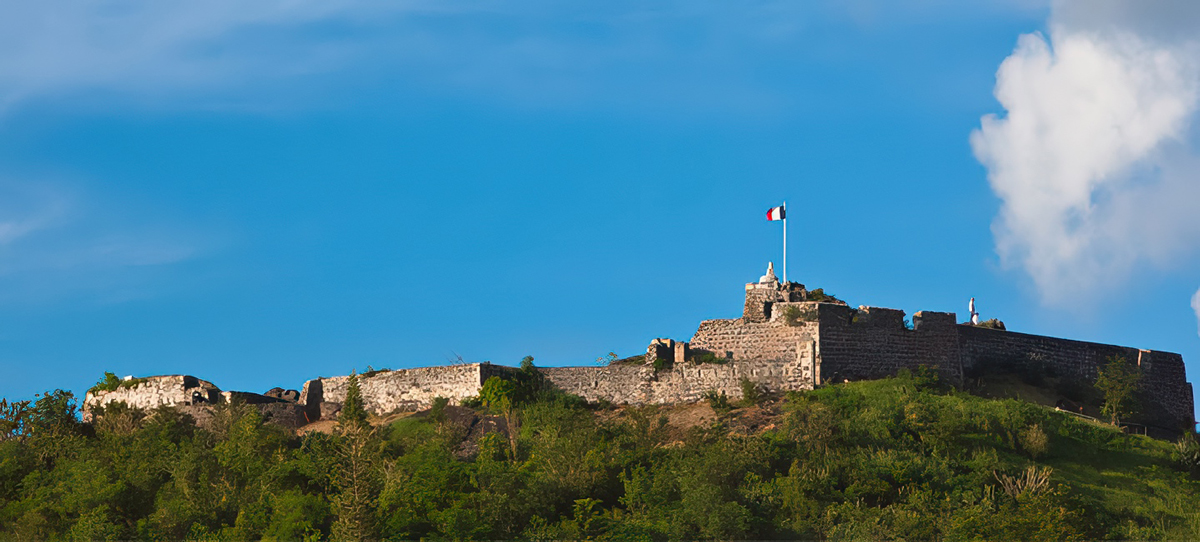
Economic Challenges and Migration in the 20th Century
The 20th century brought significant challenges to the history of Saint Martin / Sint Maarten. Economic decline forced many residents to seek opportunities elsewhere. The island’s population dwindled as people emigrated to Aruba, Curaçao, the Dominican Republic, the US Virgin Islands, and the United States. The oil refineries in Aruba and Curaçao, established by the Dutch-British Shell Oil Company in the 1920s, attracted many Saint Martiners looking for work. Between 1920 and 1929, the island’s population decreased by 18 percent, reflecting the harsh economic conditions of the time and impacting the island’s demographic history.
In 1939, a significant development occurred that would shape the island’s future. France and the Netherlands abolished customs duties and indirect taxes between their respective zones on the island. This agreement facilitated the free flow of goods and services, fostering economic growth and closer ties between the two communities. However, the French government in Guadeloupe had limited involvement in the administration of Saint Martin, apart from occasional military interventions during the two World Wars, reflecting a period of limited administrative oversight in the island’s history.
World War II marked a turning point for the island. Under the Vichy Regime (1940-1944), a blockade was imposed on Allied forces, isolating the island. However, this period also intensified trade with the United States, which became the island’s primary supplier of goods. This trade boom enriched local merchants, who profited from selling goods such as cigarettes and textiles in Guadeloupe and Martinique. During and after the war, the island’s cultural landscape began to shift, with American and English influences growing stronger. English emerged as the dominant language, particularly on the Dutch side, where it competed with Dutch and French, highlighting the evolving linguistic history of the island.
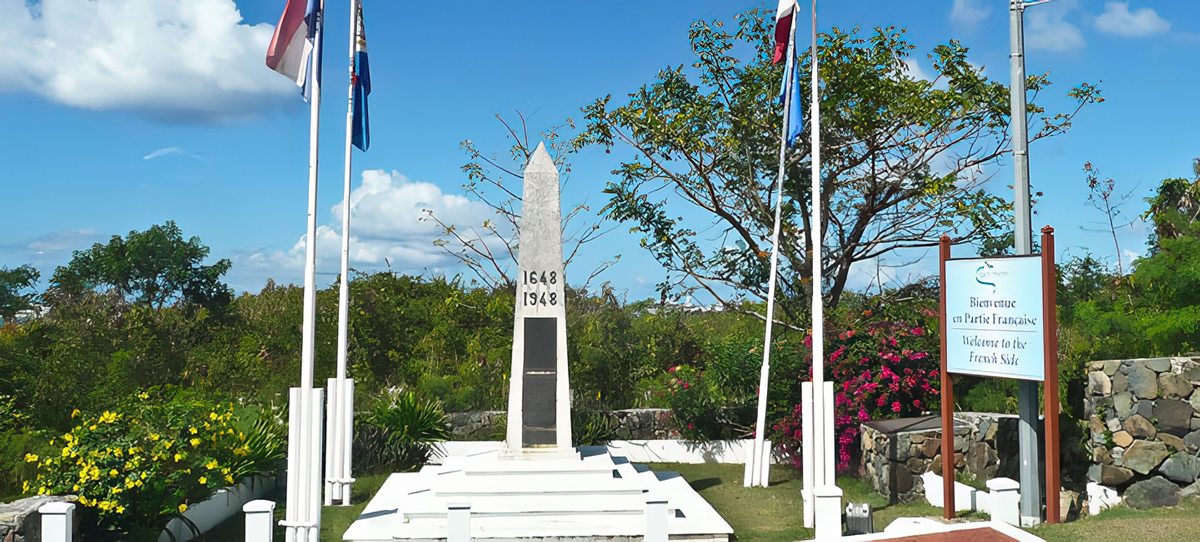
The Rise of Tourism and Economic Transformation
The post-war years ushered in a new era of economic transformation for Saint Martin / Sint Maarten. In 1943, the site of the present-day Princess Juliana International Airport on the Dutch side was established as a strategic US airbase during the war. This development played a crucial role in opening the island to tourism in the following decades, marking a significant shift in the island’s economic history.
In 1946, French Saint Martin was officially incorporated into the department of Guadeloupe, with the two communes of Saint Martin and Saint Barthélemy forming a single “arrondissement.” This administrative change marked the beginning of a closer relationship with mainland France, although the island continued to maintain a degree of autonomy, reflecting the evolving administrative history of the island.
The 1960s and 1970s saw the rapid development of the island’s tourism industry. American tourists, drawn by the promise of sun-soaked beaches and warm Caribbean waters, began flocking to Saint Martin / Sint Maarten. The Dutch side, in particular, experienced a hotel boom, with numerous resorts springing up to accommodate the influx of visitors. In 1963, the first banks were established on the island, and residents gained access to electricity, further modernizing the island’s infrastructure. This period marked a transformative phase in the history of Saint Martin / Sint Maarten, shifting from a primarily agrarian economy to one driven by tourism.
By 1972, the Grand Case Airport on the French side had opened, facilitating even more tourism. The island’s economy became increasingly dependent on this industry, and by the 1980s, tourism was in full swing. The short flight time from the United States, combined with the island’s duty-free shopping and vibrant nightlife, made it a highly sought-after destination.
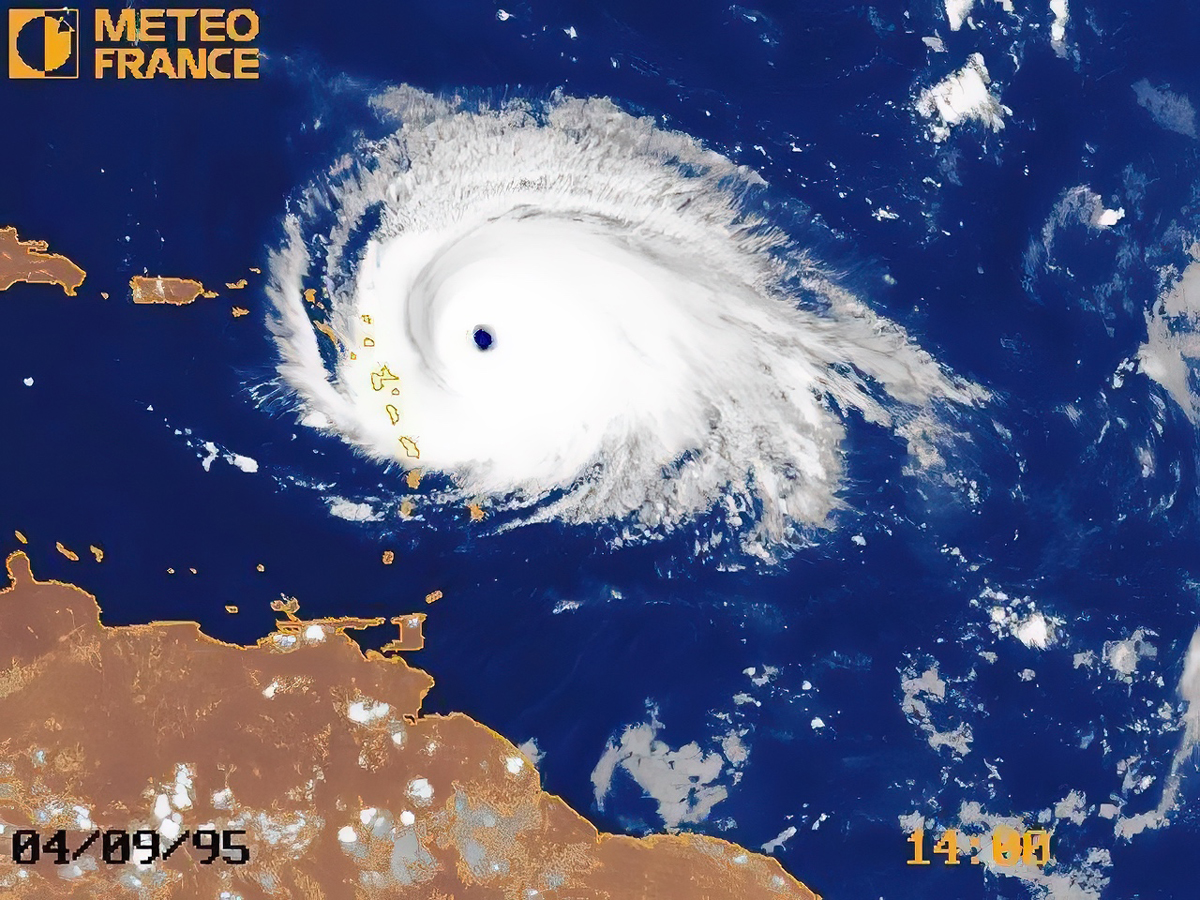
Natural Disasters and Resilience
The history of Saint Martin / Sint Maarten is also marked by natural disasters that have tested the island’s resilience. On September 5, 1995, Hurricane Luis struck the island with devastating force. With winds reaching up to 155 mph (250 km/h), the hurricane caused extensive damage, resulting in twelve deaths and significant property destruction. The hurricane’s impact on the tourism infrastructure was severe, with many hotels and businesses left in ruins. The recovery process was arduous and required substantial rebuilding efforts, highlighting the island’s vulnerability to natural disasters.
Following Hurricane Luis, the island faced further challenges, including Hurricane Maria in 2017, which brought additional devastation. Despite these setbacks, the people of Saint Martin / Sint Maarten demonstrated remarkable resilience, rebuilding their homes and businesses and continuing to welcome tourists. The history of recovery from these disasters underscores the strength and determination of the island’s inhabitants. MORE INFOS
Contemporary History and Future Prospects
In recent decades, the history of Saint Martin / Sint Maarten has been characterized by growth, development, and adaptation. The island has emerged as a premier Caribbean destination, known for its beautiful beaches, luxury resorts, and vibrant cultural scene. The dual-nationality status of the island continues to shape its identity, with the French and Dutch sides maintaining distinct cultural and administrative frameworks.
The island’s contemporary history also reflects ongoing efforts to address environmental challenges and promote sustainable tourism. As one of the most ecologically diverse regions in the Caribbean, Saint Martin / Sint Maarten is committed to preserving its natural beauty while fostering economic growth. Initiatives to protect marine life, manage waste, and promote renewable energy are integral to the island’s future sustainability.
In conclusion, the history of Saint Martin / Sint Maarten is a rich tapestry woven from the threads of indigenous cultures, European colonization, economic transformation, and modern development. From its early days as a home to the Ciboney and Arawak peoples to its current status as a vibrant Caribbean destination, the island’s history reflects a journey of resilience and adaptation. Understanding this history provides valuable insights into the unique character and enduring appeal of Saint Martin / Sint Maarten, making it a destination with a compelling story to tell.
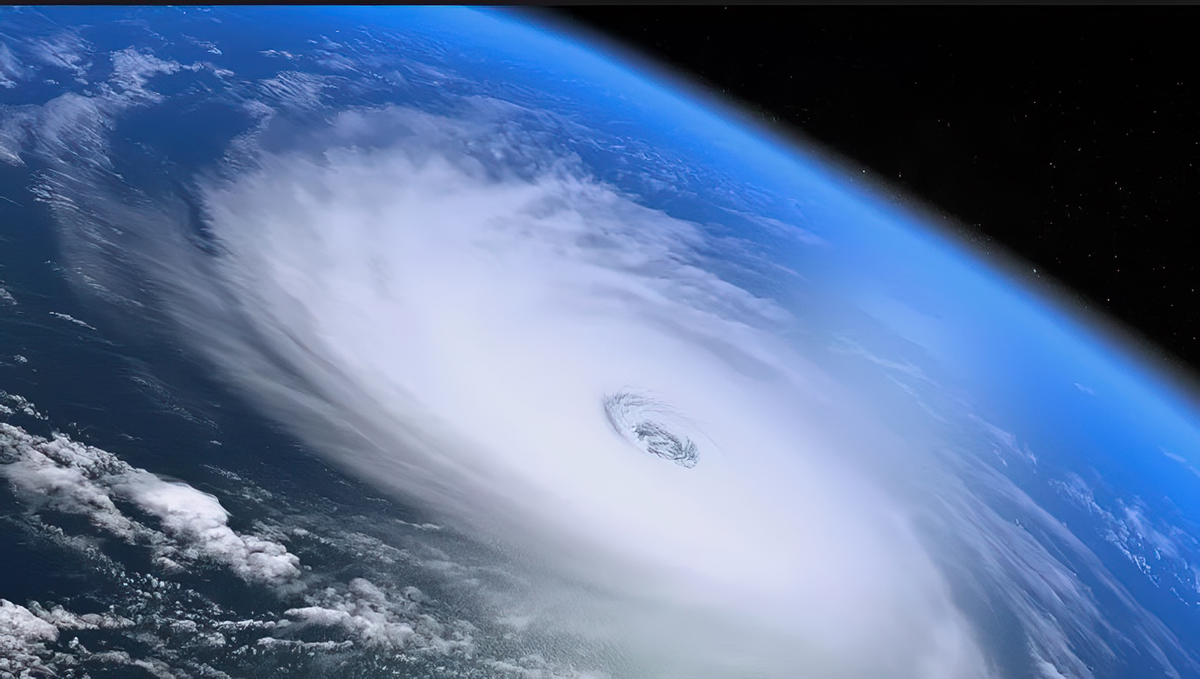
Hurricane Irma’s Impact and Recovery in Saint Martin / Sint Maarten
On September 6, 2017, Hurricane Irma, a Category 5 storm, struck Saint Martin / Sint Maarten with unprecedented force, leaving a trail of devastation across the island. This hurricane, one of the strongest to ever hit the Caribbean, caused extensive damage, affecting both the French and Dutch sides of the island and significantly disrupting the local economy and daily life. MORE INFOS
Immediate Devastation and Damage
Hurricane Irma’s impact on Saint Martin / Sint Maarten was catastrophic. The storm’s powerful winds, reaching speeds of up to 185 mph (295 km/h), tore through the island, causing widespread destruction. Buildings, including homes, hotels, and businesses, were left in ruins. Infrastructure was severely damaged, with roads, bridges, and utilities being particularly hard-hit. The island’s iconic landmarks and tourist facilities, which had previously drawn visitors from around the world, were left battered and inoperable.
The immediate aftermath of the hurricane revealed the full extent of the damage. Many residents were left homeless, and the island faced a significant humanitarian crisis. Power outages, water shortages, and communication blackouts compounded the difficulties faced by those affected. The tourism industry, a critical component of the island’s economy, came to a standstill, further exacerbating the economic challenges.
Challenges in the Recovery Process
In the years following Hurricane Irma, Sint Maarten has been engaged in a slow and challenging recovery process. One of the primary obstacles has been the reimbursement of insurance claims. Many property owners faced delays and disputes with insurance companies, which complicated the process of rebuilding and repairing their properties. The complexity of these claims, combined with the sheer scale of the damage, has hindered the speed of recovery.
Another significant challenge has been the routing of materials and supplies necessary for reconstruction. The destruction of infrastructure and logistical networks made it difficult to transport essential resources to the island. This bottleneck in the supply chain further delayed the rebuilding efforts and increased costs.
The extent of the reconstruction required was immense, given the scale of the damage. From repairing homes to restoring public buildings and infrastructure, the task at hand was daunting. The island’s focus shifted from its traditional tourism-driven economy to one centered around reconstruction efforts. This transition, while necessary, brought its own set of challenges, including economic uncertainty and shifts in employment patterns.
Economic and Social Impact
Prior to Hurricane Irma, Saint Martin / Sint Maarten thrived on its vibrant tourism industry, which played a crucial role in the island’s economy. The storm’s aftermath saw a temporary halt to this economic activity, as the island’s tourism infrastructure was severely compromised. Hotels, resorts, and restaurants, integral to the island’s appeal, were damaged or destroyed, leading to a significant decline in tourist arrivals.
The island’s economy faced a shift as the focus moved from tourism to rebuilding. While this change was essential for recovery, it also led to economic strain. The local workforce, previously engaged in the tourism sector, faced challenges as jobs related to reconstruction became more prevalent. This transition required adaptation and re-skilling, contributing to the island’s economic turbulence.
Ongoing Recovery and Resilience
Despite the formidable challenges, the people of Saint Martin / Sint Maarten have demonstrated remarkable resilience and determination in the face of adversity. Local authorities, residents, and international aid organizations have worked tirelessly to rebuild and restore the island. Reconstruction efforts have focused on repairing homes, revitalizing businesses, and restoring essential services.
The recovery process has also seen a significant influx of international assistance. Donors, NGOs, and governments from around the world have contributed resources and support to aid in the rebuilding efforts. This global solidarity has played a crucial role in helping the island navigate its recovery.
As of today, Saint Martin / Sint Maarten continues to rebuild and recover from the impacts of Hurricane Irma. The island’s economy is gradually stabilizing, with a renewed focus on both tourism and reconstruction. Efforts to restore the island’s infrastructure and tourist facilities are ongoing, with many businesses and attractions reopening their doors to visitors.
Looking Ahead
The recovery from Hurricane Irma has been a long and arduous journey for Saint Martin / Sint Maarten. The island’s resilience and determination have been key factors in overcoming the challenges faced. As the island continues to rebuild and recover, there is a renewed sense of hope and optimism for the future.
The lessons learned from the recovery process are shaping the island’s approach to future challenges. Efforts are being made to enhance disaster preparedness and strengthen infrastructure to better withstand future storms. Additionally, the focus is on diversifying the economy to reduce reliance on tourism and build a more sustainable and resilient community.
Saint Martin / Sint Maarten’s journey since Hurricane Irma is a testament to the strength and resilience of its people. While the road to recovery has been challenging, the island is gradually returning to its status as a vibrant and welcoming destination. The spirit of resilience and the commitment to rebuilding ensure that Saint Martin / Sint Maarten will continue to thrive in the years to come.
